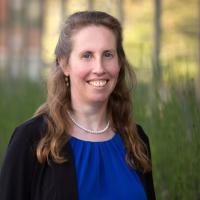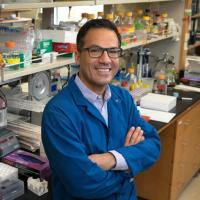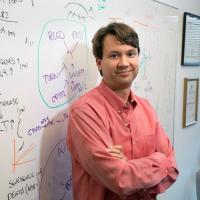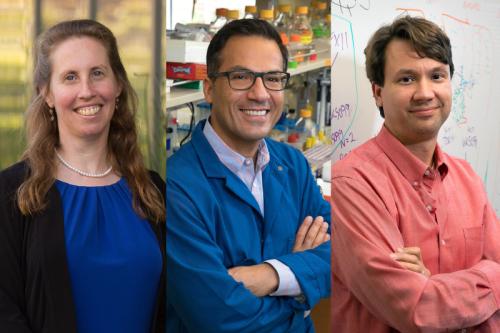
Meet the associate directors leading the UCLA Broad Stem Cell Research Center into its next phase
Dr. Thomas Rando, director of the Eli and Edythe Broad Center of Regenerative Medicine and Stem Cell Research at UCLA, has appointed three associate directors to help lead the Center: Dr. Brigitte Gomperts, Associate Director of Translational Research; Dr. Siavash Kurdistani, Associate Director of Technology Development; and William Lowry, Associate Director of Education and Technology Transfer. These focus areas reflect a commitment to research with impact, knowledge sharing and innovation. Here, these UCLA scientists share their visions for their new roles and what motivates them to pursue their research.
Dr. Brigitte Gomperts, Associate Director of Translational Research
Tell us about your research.
My lab is studying lung repair and regeneration and identifying how this process goes awry and leads to lung diseases. Right now, we're particularly focused on developing new therapies for lung diseases like idiopathic pulmonary fibrosis and cystic fibrosis. On a broader scope, our team is also studying how toxins from tobacco smoke and vaping can lead to precancerous lesions, which in turn can develop into lung cancer.
How has being a UCLA Broad Stem Cell Research Center member helped you as a scientist?
For the past 15 years, the Center has provided a scientific home for me to explore all my research questions, as well as access to cutting-edge technologies housed within the flow cytometry, microscopy and sequencing cores. With the cystic fibrosis project, I’m collaborating with fellow Center members Dr. Donald Kohn, a gene therapy expert, and Dr. Steven Jonas, an expert in gene and cell delivery, to identify a gene correction for the disease. Being a part of this community of outstanding scientists has been invaluable.
What motivates you to pursue your research?
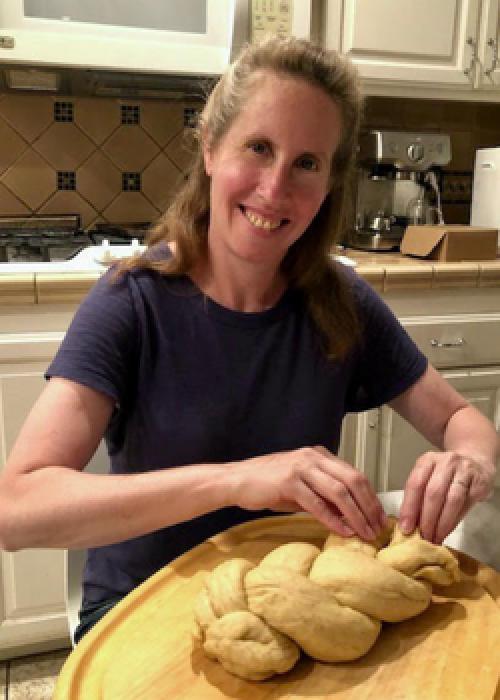
Although we’ve increased the number of therapies at our disposal, as a physician, there are still a lot of times I have to tell patients, “Unfortunately, there’s nothing more that we can do for you.” That frustrates me but it also pushes me to develop new therapeutic strategies that might help patients. In my lab, everything we do has a translational angle. This emphasis on how our research contributes to therapies is motivating for my students because they can clearly see how their work will help people down the road.
What’s your vision for the Center as the Associate Director of Translational Research?
The Center has been at the forefront of so many amazing gene, cell and drug-based therapies. Several investigators at the Center are already getting therapies to patients with incurable diseases, so my vision is to capitalize on the expertise that exists and build systems to move the incredible basic biology projects in the Center forward in a translational way too. At UCLA, our medical campus and hospitals are all part of the main campus, so the infrastructure is in place to take research discoveries made in the labs straight to clinical trials run right here. In order to develop new therapies and bring them to market, we’ll need to think very broadly. We need help from engineering, biostatistics, law and other disciplines, so another goal of mine is to expand collaboration with various departments and professional schools.
What’s something most people might not know about you?
I love to bake. I’ve been baking with my daughter since she was teeny tiny, and it’s been a great bonding activity for us. Both of us took French in high school and have always been enamored with French food and pastries. We’ve made a lot of cakes, cookies and we recently made a brioche bread that turned out amazing. The next thing on our list to tackle is sourdough bread.
Dr. Siavash Kurdistani, Associate Director of Technology Development
Tell us about your research.
My lab studies histones, which are proteins that package the DNA inside cells and help control gene expression. Our team has discovered that histones also play a direct role in the regulation of copper biology. Since copper is a metal that’s essential for a number of biological functions, including respiration and nutrient metabolism, this finding could provide a new framework for understanding how histones contribute to the development and progression of diseases such as cancer and neurodegenerative disorders. Our work also has important implications for understanding the evolution of life in the presence of oxygen.
How has being a UCLA Broad Stem Cell Research Center member helped you as a scientist?
The Center has helped with grant applications and provided funding that allows me to pursue my novel scientific inquiries. The Center also invests in technology like that housed within its high throughput sequencing core, from which my lab has benefited. In addition to these practical ways being a member has propelled my research forward, the Center has also served as an important intellectual hub for my colleagues and me. The discussions we have certainly make me think about science and my own research a little differently.
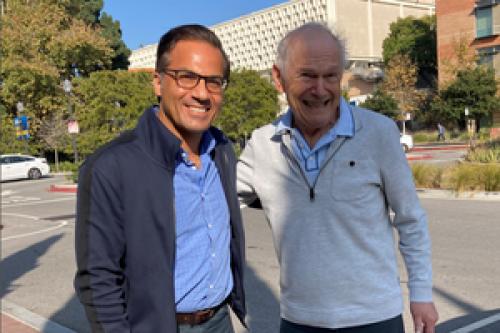
What motivates you to pursue your research?
I think what motivates scientists is the challenge of working on and solving a difficult problem. While it’s true that progress comes slowly, it’s really the challenge that ignites and sustains my curiosity. It’s an incredible privilege to be living in a time when there’s all this amazing technology and enough stability in society to establish a scientific infrastructure to help us uncover nature’s mysteries. My hope is that the fundamental discoveries we make will be used to understand disease processes and that our findings will lead to improved therapeutics for the betterment of mankind.
What’s your vision for the Center as the Associate Director of Technology Development?
Science relies on innovation. My role is to cultivate and promote innovation in ways that are more instructive than just relying on serendipity or on individuals miraculously pulling through. Part of that is obviously bringing in new technologies that allow researchers to see or probe things in ways that weren’t possible before. But beyond just buying new equipment, I’d like to build programs that inspire people to interact and collaborate. The Center currently utilizes Innovation Awards to encourage members to pursue ideas that normally wouldn’t get support from traditional funding mechanisms. I’d like to build on this infrastructure to lower the barrier to taking scientific risks. I hope that by bringing in new technologies, enabling new types of collaboration and promoting new ways of thinking, we’ll foster an environment that drives fundamental discoveries in science.
What’s something most people might not know about you?
As the chair of biological chemistry, I might come off as having it all together, as someone who’s calm and collected, but there’s actually a massive storm that’s happening on the inside. There's always this fear of failure and anxiety around messing up. I certainly don't shy away from taking on responsibility, but I don’t always take on responsibilities with full confidence. Still, I always strive to do my best by getting informed, working hard and being fair-minded. When I interviewed a student earlier this year, he said that he wanted to be like me when he was older. While I appreciated the compliment, I kept thinking to myself, “You don’t know what you’re wishing for.” I also love soccer—playing and watching the sport—but I think most people know that about me!
William Lowry, Associate Director of Education and Technology Transfer
Tell us about your research.
My lab focuses on cell fate decision-making in the nervous system and the epidermis, the outermost layer of the skin. Both of these tissues come from the same embryonic origin called the ectoderm, and both contain different kinds of cells that make decisions over time based on their environment and age. By looking at how the ectoderm gives rise to cells that comprise the nervous system and cells that make up skin, hair and nails, our team is gaining a better understanding of how mutations can occur during this process, leading to intellectual disability syndromes in the case of neural cells, or a predisposition to cancers like carcinoma in the case of skin cells.
How has being a UCLA Broad Stem Cell Research Center member helped you as a scientist?
After joining the Center in 2006, I quickly realized that I had a lot of overlapping interests with the other stem cell scientists here at UCLA. Since we were asking a lot of the same questions, almost every project grew into a collaboration and my research moved in interesting directions as a result. Without this embedded community, our lab would’ve been singularly focused on hair follicle stem cells. We wouldn’t have gotten into nervous system development, or pluripotent stem cells, or metabolism. The collaborative atmosphere at the Center has enabled my lab to explore new paths and forge ahead when the data took us in directions we didn’t know much about. There was always an expert to ask, “What should we do next? Can you help?”
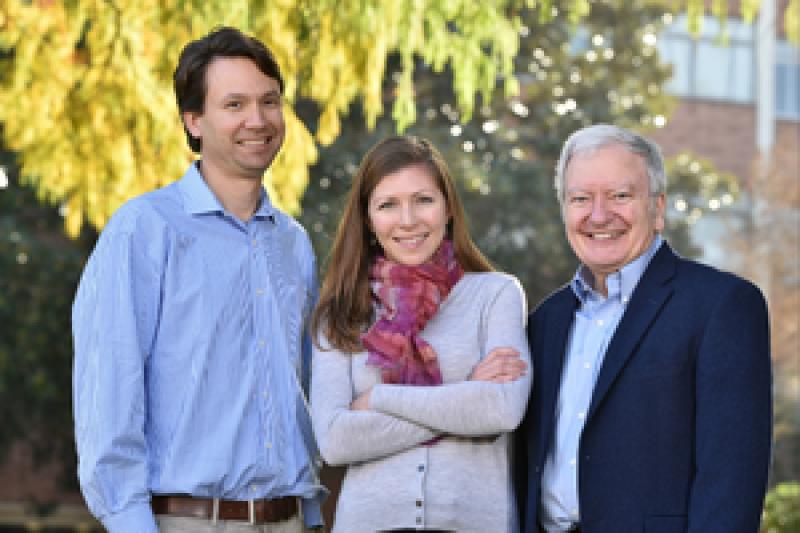
What motivates you to pursue your research?
I enjoy turning our research knowledge into useful applications for patients. When studying hair follicle stem cells, our team had a hunch that the metabolism of these cells was involved in their activation, so we started manipulating metabolic pathways in shaved mice to observe how these changes affected hair regrowth. Through a collaboration with fellow Center member Heather Christofk, we discovered a new way to activate hair follicle stem cells to make hair grow back and even formed a company called Pelage Pharmaceuticals to develop the novel technologies and drugs that ignite this activation. Hair loss can be emotionally devastating for people and affects patients with various conditions. My hope is that these new drugs we’re developing can really make a difference. That’s what keeps me going.
What’s your vision for the Center as the Associate Director of Education and Technology Transfer?
For the education part, besides continuing to oversee the Center’s Stem Cell Training Program, I aim to help build out the undergraduate training program made possible through the CIRM COMPASS grant. For this new program, we’ll match a diverse group of students with lab mentors. The program will provide financial and tuition support so these students can focus on working in the labs of stem cell Center members for two to three years to gain real, significant research experience. When it comes to the technology transfer portion, my goal is to make sure Center members are aware of entities both inside and outside of UCLA that can help bring their technologies to market. As researchers, the discoveries we make could be considered inventions. To capitalize on that invention, the discovery needs to be covered as intellectual property, and if someone is going to commercialize that intellectual property, the technology needs to be licensed from the university. The whole process starts by filing a letter of invention with the UCLA Technology Development Group, which will then decide whether a patent should be filed to cover the technology. Since I’ve gone through this process more than a dozen times now, my role is to guide my colleagues through the various steps involved.
What’s something most people might not know about you?
I started taking piano lessons a few years ago with my son. He quit, but I’ve kept going. I’m enjoying making music… I’m not very good but it’s been fun!
